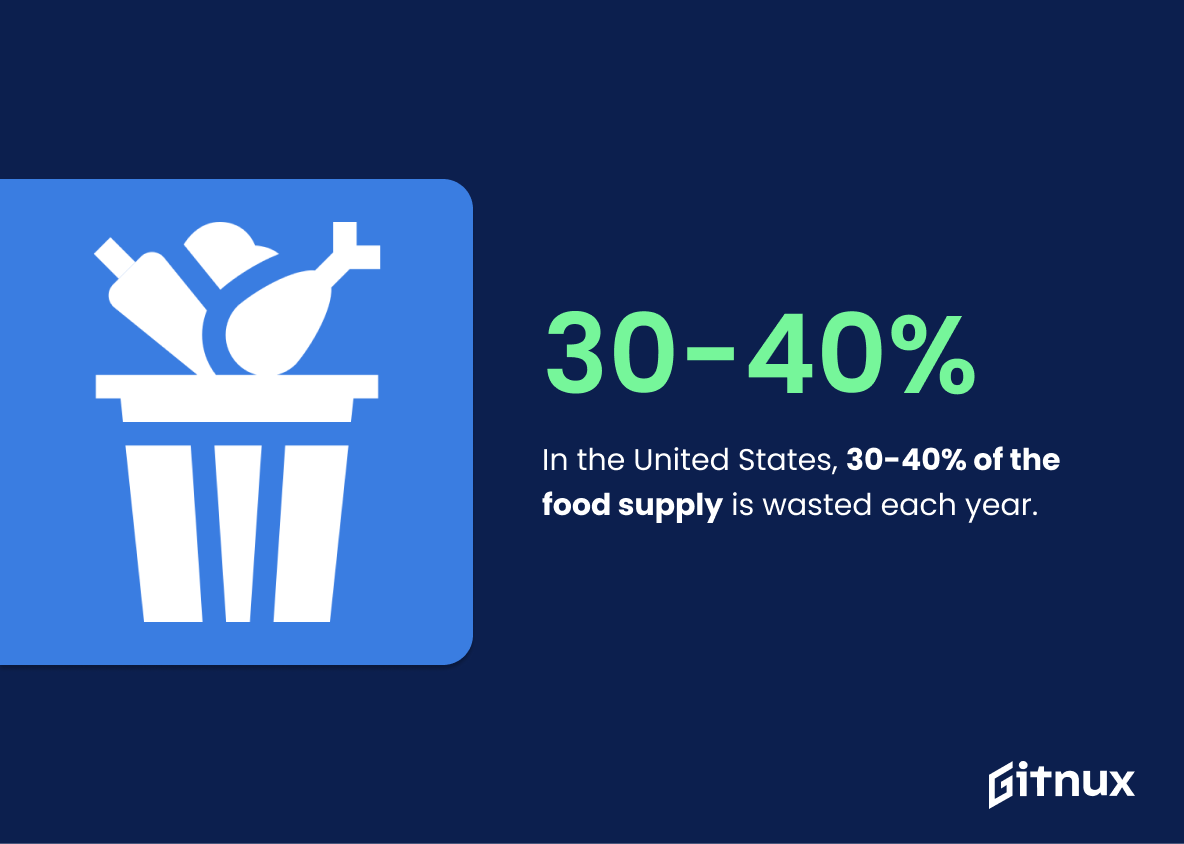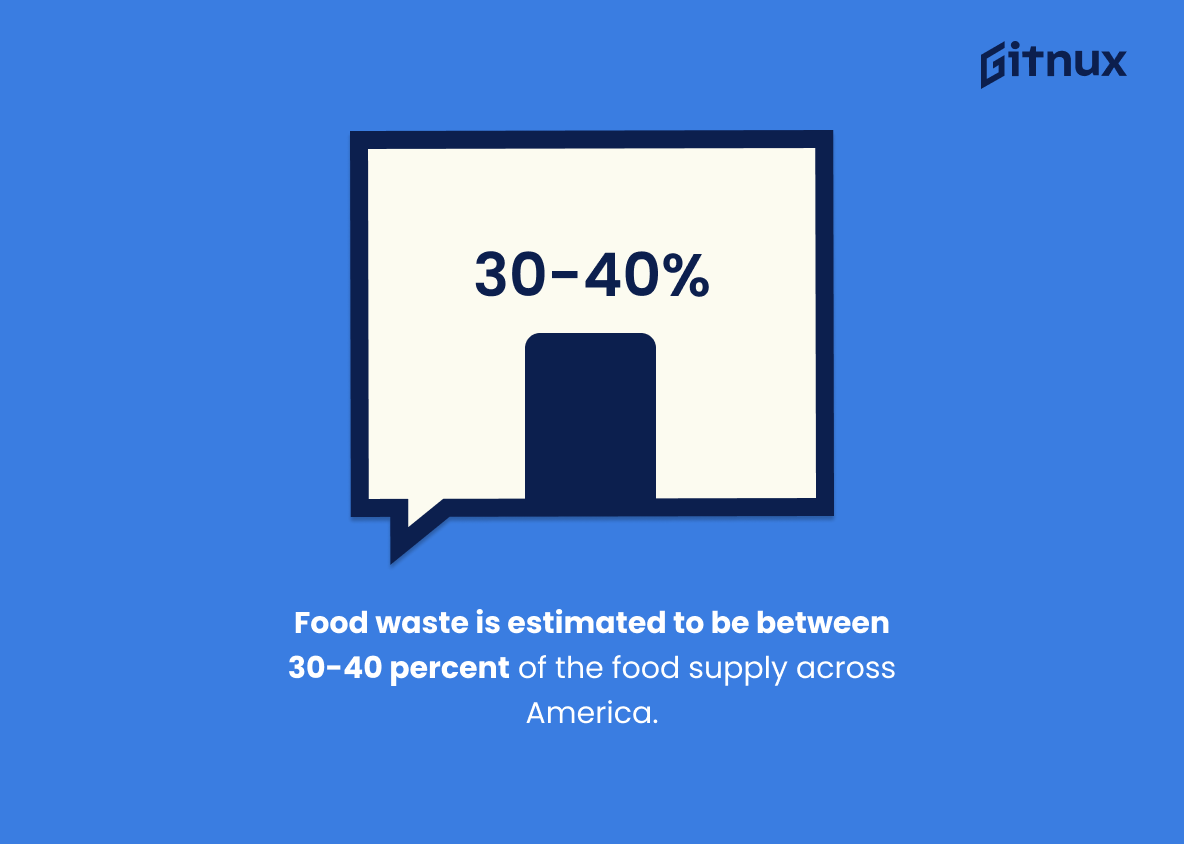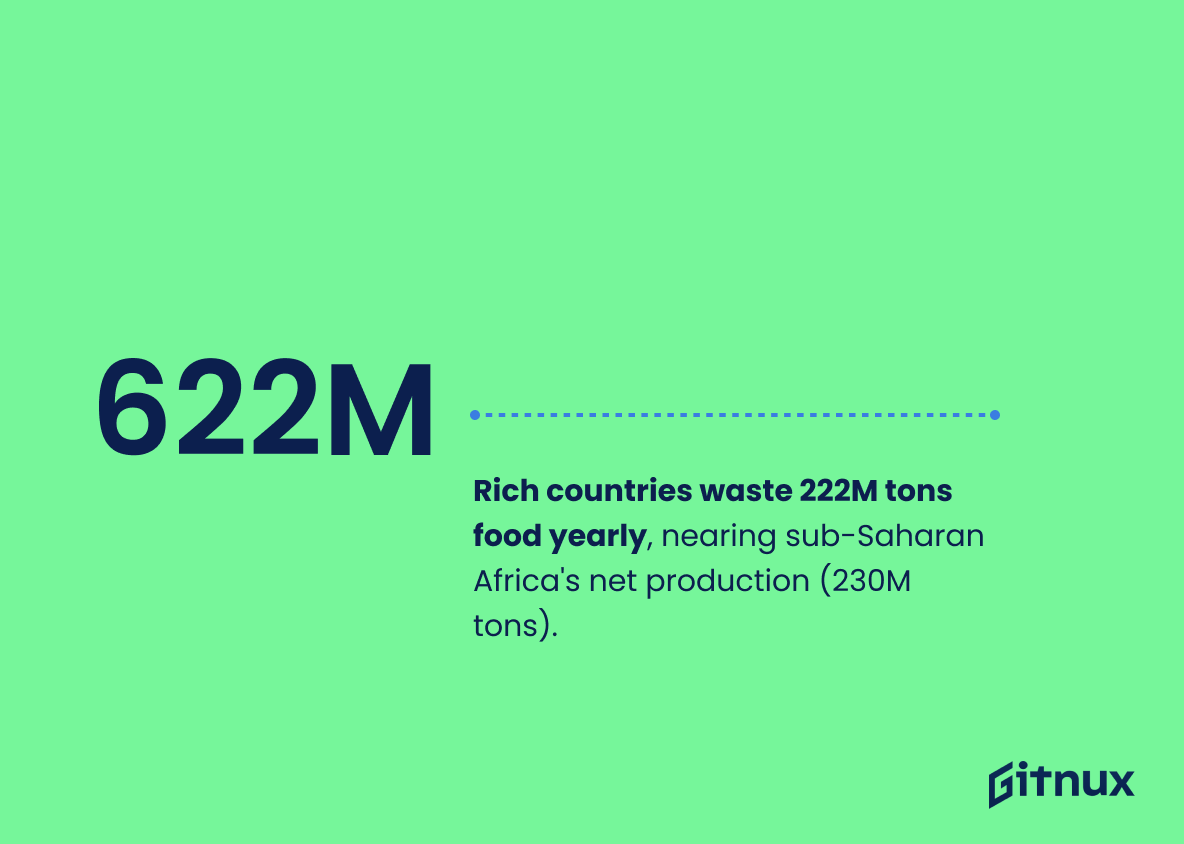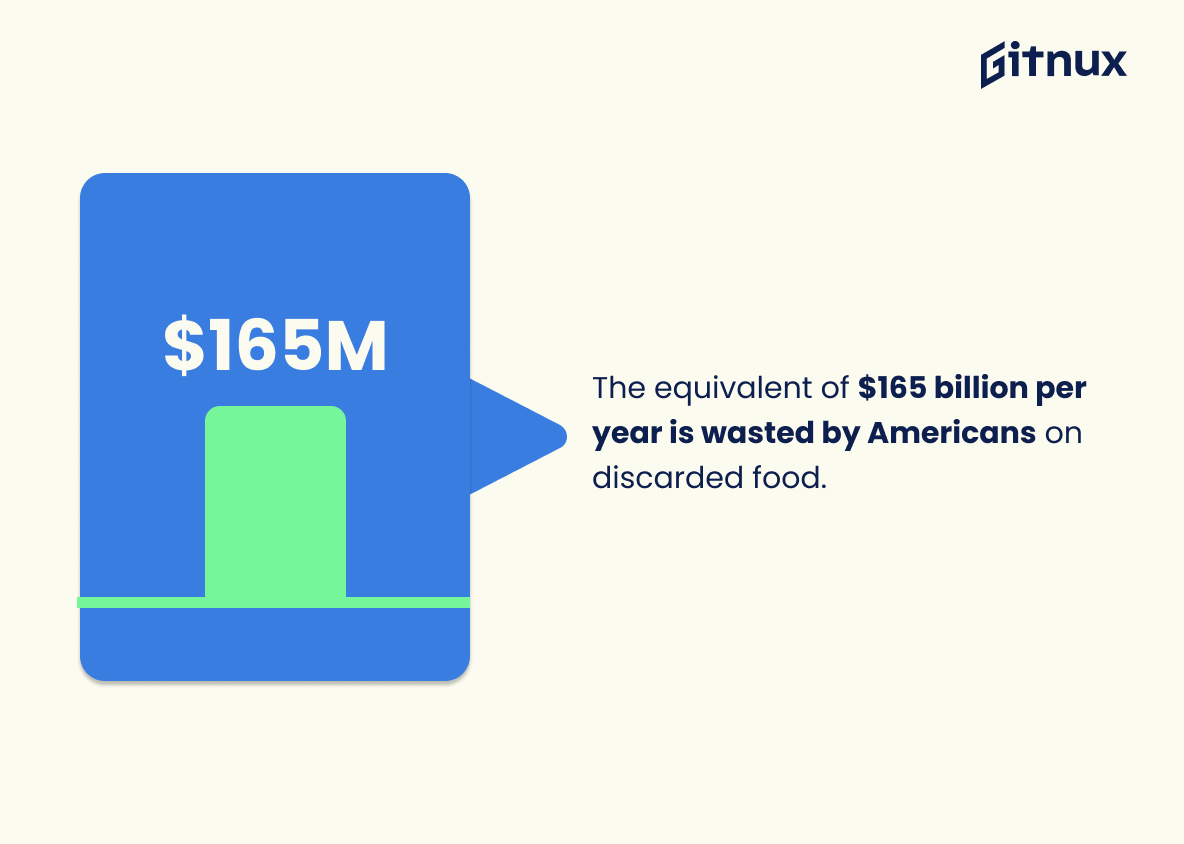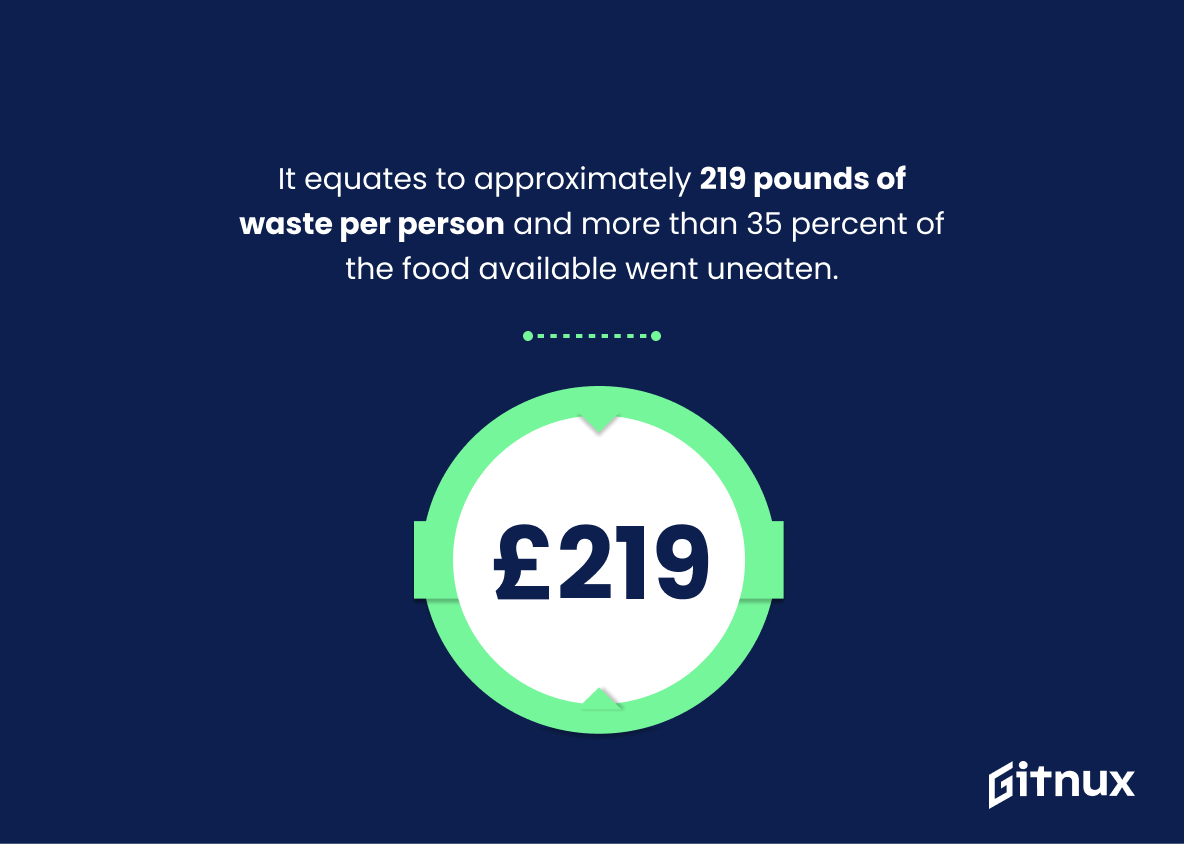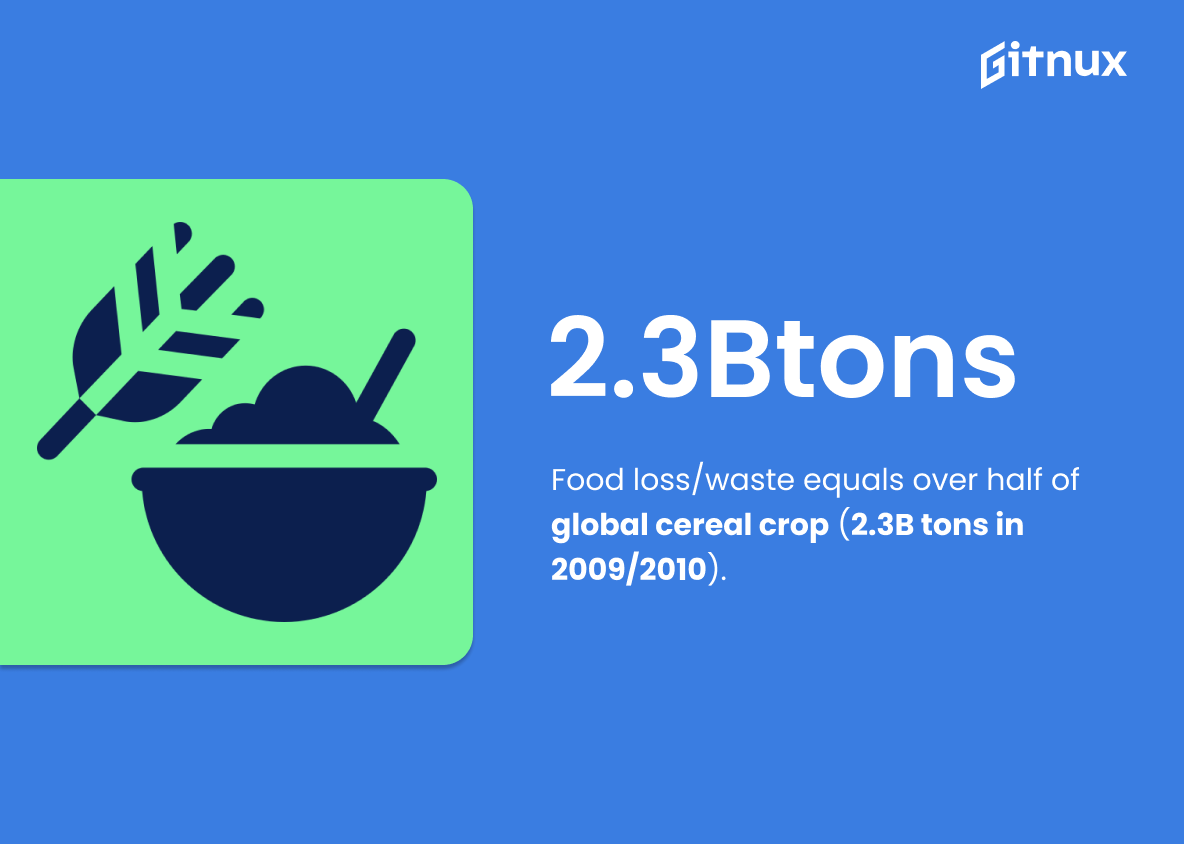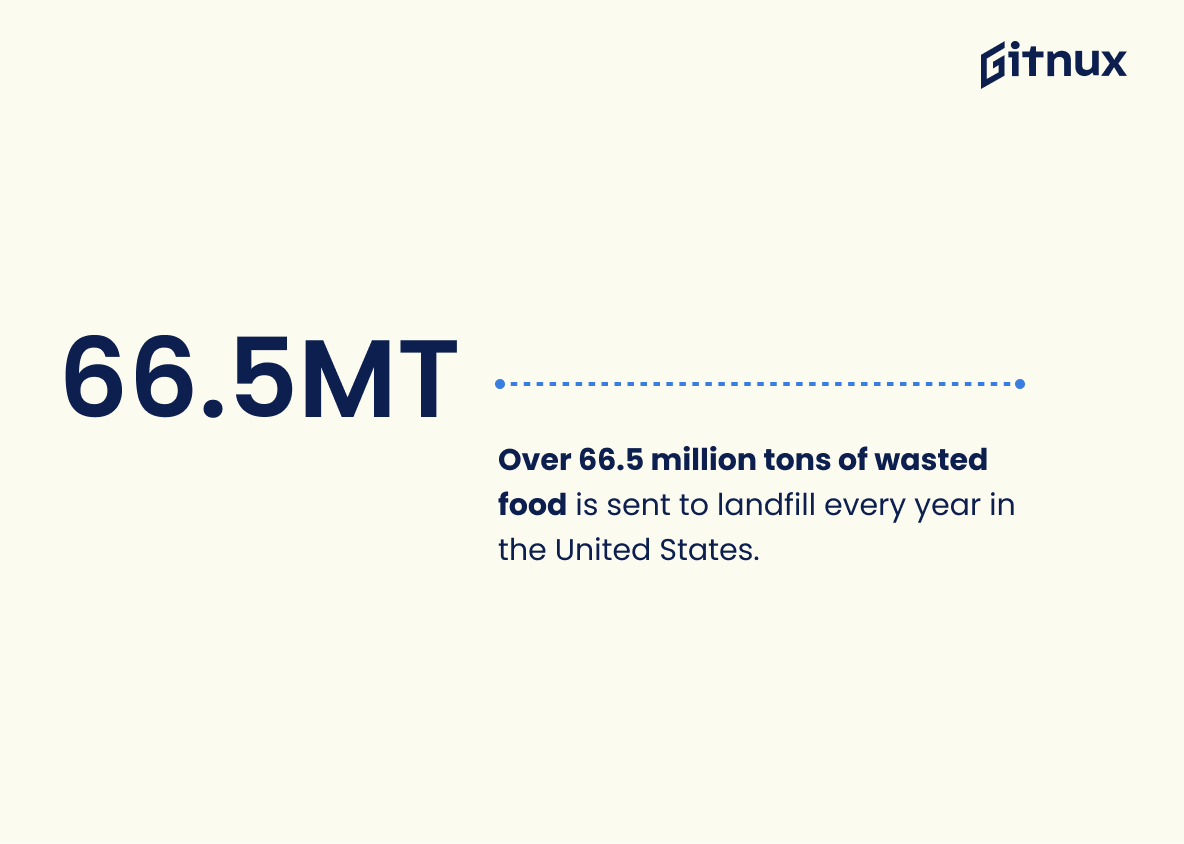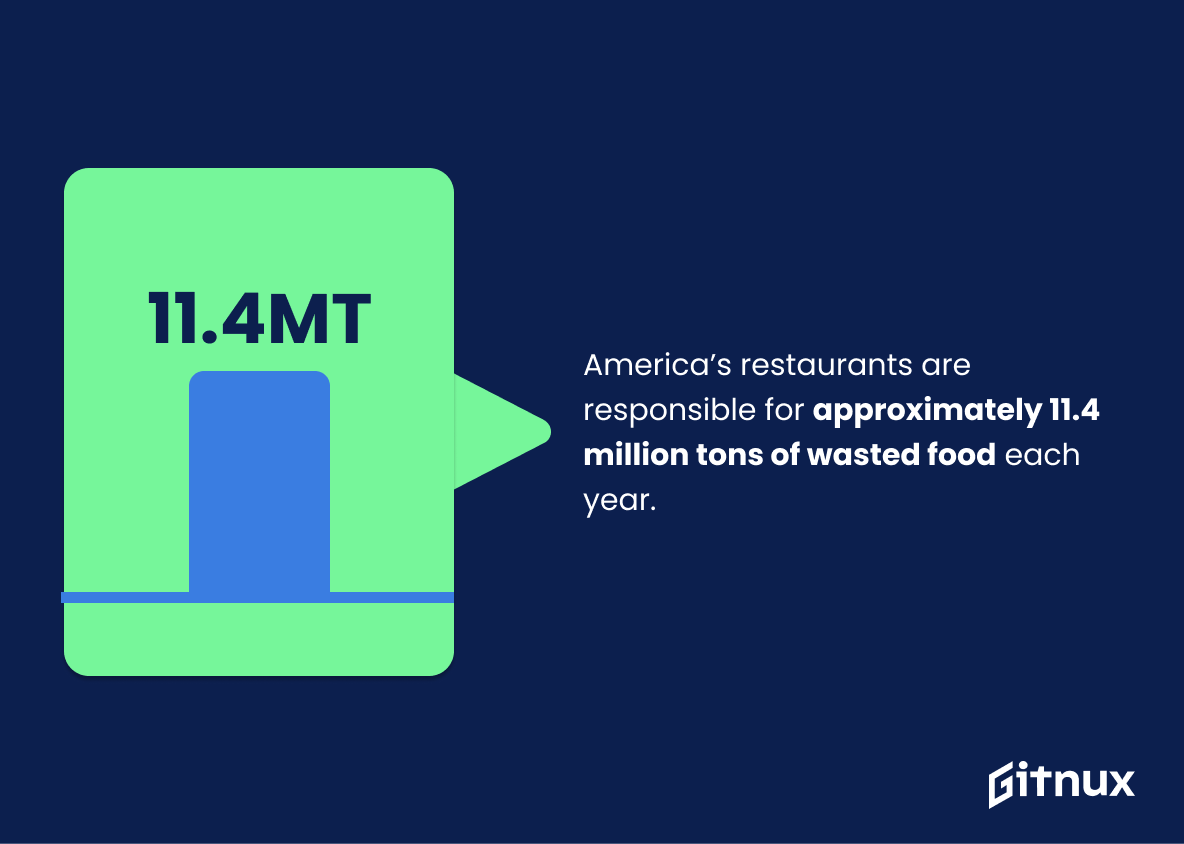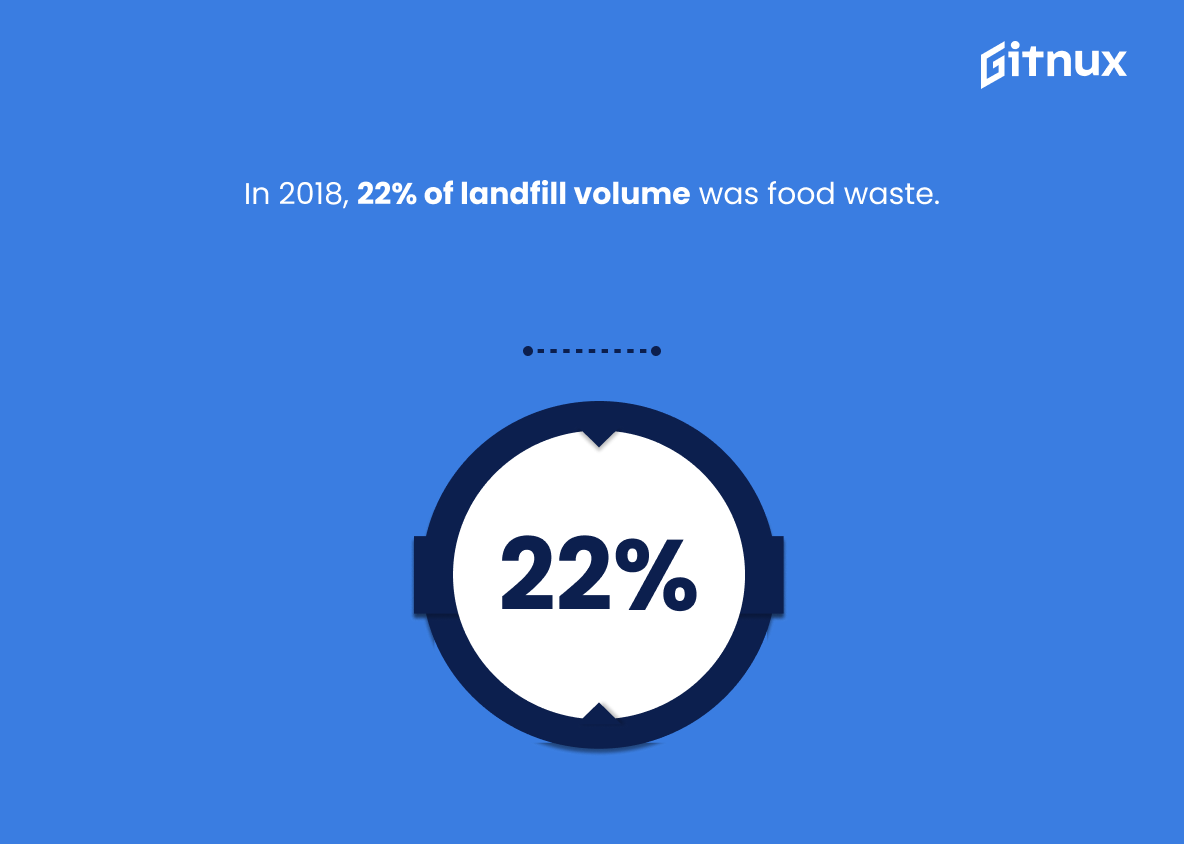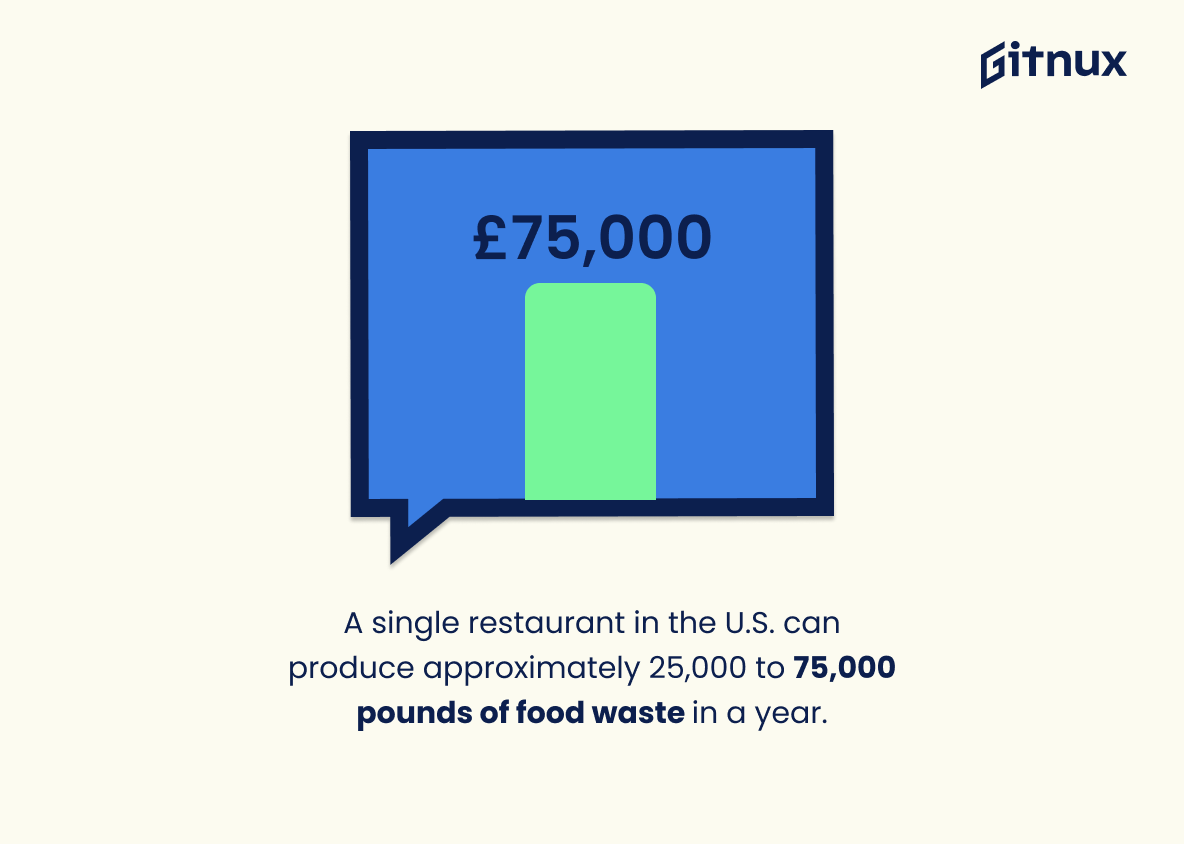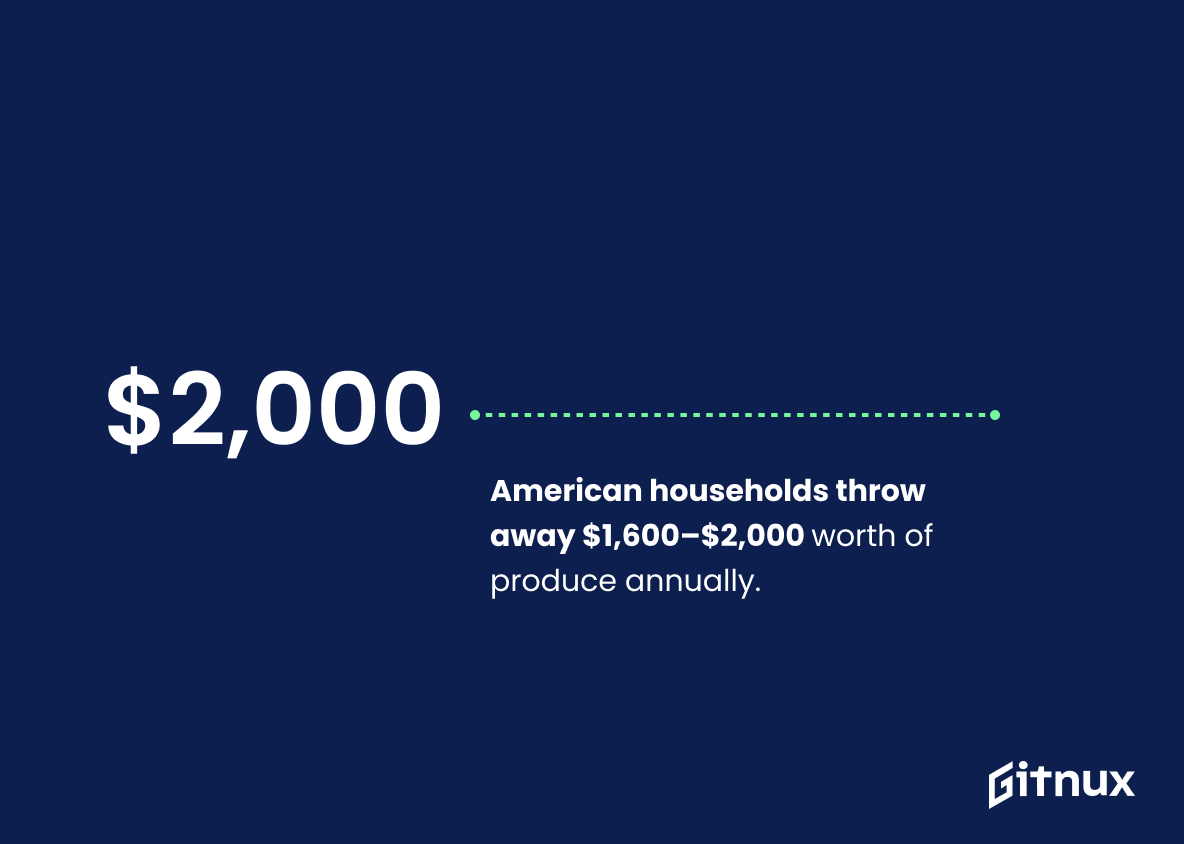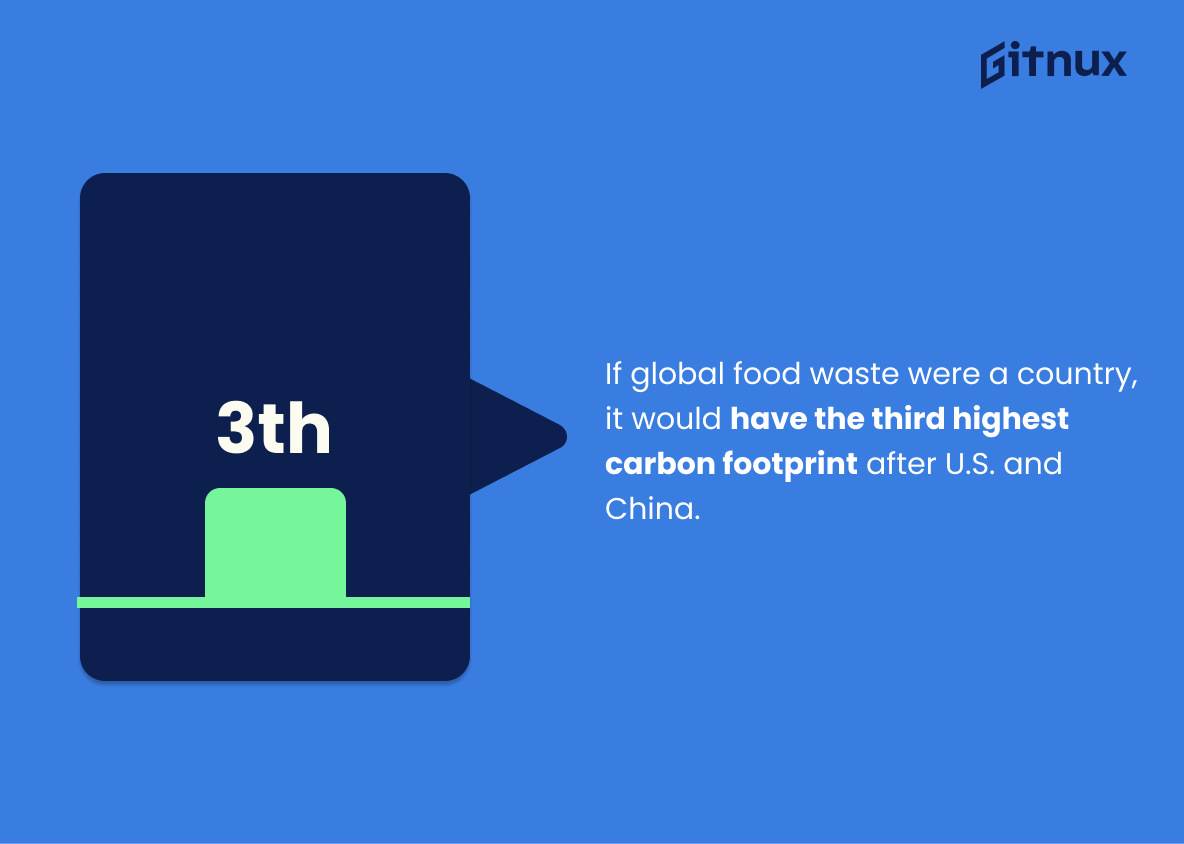As a nation that cherishes its bountiful agriculture and diverse cuisines, food is indeed a pivotal part of American culture. Yet, lurking beneath this abundance lies a shocking reality – enormous amounts of food are wasted every single day.
This blog post is set to uncover the staggering statistics behind food waste in America, raising awareness about this overlooked issue and providing insight into why it’s more than just a call for concern. It’s not just about wasted resources; it’s about the economy, environment, ethics, and much more. So, let’s delve into this topic, arming ourselves with knowledge, because change often begins with awareness.
The Latest Food Waste In America Statistics Unveiled
In the United States, 30-40% of the food supply is wasted each year.
Highlighting that a staggering 30-40% of the U.S. food supply perishes unused each year provides potent fuel for a conversation on the scale and gravity of food waste in America. It’s an appalling realization that nearly half of the food in a country, plentiful in resources, ends up in landfills rather than in the hands of those in need.
As we crunch these numbers under the magnifying glass, it unearths an unnerving paradox of a nation where millions go to bed hungry each night yet mountains of edible food are discarded daily. A focus on such alarming statistics can help shake off complacency, trigger urgency to reform wasteful habits, and could possibly be the launching pad to innovative solutions to tackle food waste while promoting sustainable living.
Food waste is estimated to be between 30-40 percent of the food supply across America.
Highlighting an alarming statistic that shows about 30-40 percent of the food supply in America ends up as waste directs a spotlight on the sheer magnitude of the issue at hand in our bi-weekly blog post on ‘Food Waste In America Statistics.’ It is the perfect conversation starter which lends a visual perspective to readers and clearly outlines the predicament our country is facing. The statistic serves as a wake-up call, screaming out the urgency to curtail this immense waste and underline the necessity of implementing effective strategies to manage food resources better.
Not only does it stress the importance of individual involvement, but also forces policymakers and industry leaders to reassess and re-strategize their approach to waste management. So, while it’s just a number, this statistic paints a massive landscape upon which the plot of reducing food waste will be penned, serving as a starting point for change and improvement.
Every year, consumers in rich countries waste almost as much food (222 million tons) as the entire net food production of sub-Saharan Africa (230 million tons).
Diving into these eye-opening numbers unveils a harsh reality about the disparity in food consumption and waste. Ironically, the annual food waste of affluent societies is nearly equivalent to the entire net food production of sub-Saharan Africa, creating a stark contrast that cannot be ignored. The figure resonates as a reminder of the massive amount of unnecessary waste generated, while others face food insecurity.
The urgency to address the copious amount of food waste in America, thus, shines through this statistic. Amid the trending discussions on sustainability and responsible consumption, these staggering numbers serve as a potent starting point, sparking conversations, driving actions, and influencing policies against food waste in America.
The equivalent of $165 billion per year is wasted by Americans on discarded food.
Dive into the colossal figure of $165 billion per year, each dollar is representative of the squandered resources in America’s complex food system. This sends a sobering message: the food we unthinkingly toss away comes with a staggering economic price tag. When we really break down this figure within our blog post about Food Waste In America, it unveils the magnitude of our waste problem and emphasizes the urgent need for change.
One cannot simply ignore this nearly unfathomable amount of food waste; it is a jolt that prompts a hard look at our individual and collective behaviors, the policies we put in place, and the ways we can reconstruct our relationship with food. This isn’t just a jeopardy to our pocketbooks; it’s a momentous contributor to environmental issues, including climate change, making it an unavoidable statistic in the narrative of American food waste.
It equates to approximately 219 pounds of waste per person and more than 35 percent of the food available went uneaten.
The striking statistics reveal the weight of the situation, literally and figuratively. With each American citizen apparently tossing out an astonishing 219 pounds of food annually, we see a stinging portrayal of consumerism gone awry. With over a third of available agrarian supply left unconsumed, this is a stark reminder of the scale of our national waste issue.
In a world where hunger remains an urgent concern, the sheer enormity of wasted food in America paints a discordantly contrasting picture and underscores the critical need for more efficient food utilization strategies. More than mere numbers, these statistics serve as a beacon, lighting the way towards responsible consumption and environmental stewardship.
The amount of food lost or wasted every year is equivalent to more than half of the world’s annual cereals crop (2.3 billion tons in 2009/2010).
Drawing our attention to the magnitude of food wastage, the given statistic serves as a clarion call, urging us to reconsider our habits and policies. With each year, food equivalent to more than half of the world’s annual cereal crop ends up neither on our dining tables nor in our stomachs, but gets discarded. This shocking figure – 2.3 billion tons in 2009/2010 alone – is a stark reminder of the irony that we live in a world where both hunger and food waste exist simultaneously.
In the context of a blog post on Food Waste in America, this fact not only underlines the gravity of the issue on a global level, but also demands introspection on America’s substantial contribution to this wastage. Given America’s status as one of the world’s largest food producers and consumers, understanding the enormity of this loss has implications for policy changes, more efficient food supply chains, and individual consumption habits within the country.
This statistic hence provides a compelling starting point for a deeper discussion on food waste and offers a potential catalyst for concerted action to mitigate this global problem.
America tosses out enough food each year to fill a 90,000-seat football stadium every day.
Painting a vivid image of a 90,000-seat football stadium filled daily with discarded food underlines the sheer scale and significance of food waste in America. Like an alarm bell, it calls attention to a rampant issue that remains predominantly overlooked. This striking visual metaphor lays bare an unbelievable reality, translating cold hard data into a poignant statement that fosters a deeper connection with the readers and an immediate understanding of the topic: the staggering degree of food wastage in America.
It demands immediate reflection on consumption practices, food production methods, and policies related to food waste in the country. It stimulates debate and encourages readers to take constructive actions towards waste reduction.
Over 66.5 million tons of wasted food is sent to landfill every year in the United States.
Painting a compelling picture of the issue at hand, this statistic serves as a vivid and dramatic marker of the sheer scale of the food waste problem in the United States. The mountainous figure of 66.5 million tons of food discarded annually underlines the urgent need for remedial action. It’s equivalent to filling up over 81,000 Olympic-sized swimming pools with wasted food, a visual that alone illuminates the extravagance of this issue.
The statistic is integral to the blog post on Food Waste In America as it forms the centerpiece of the narrative, offering readers not only a quantitative assessment of the problem but also a qualitative depiction of national wastefulness. Furthermore, understanding the enormity of wasted food can spur significant dialogue on potential solutions, conservation efforts, and policy changes towards more sustainable food management.
America’s restaurants are responsible for approximately 11.4 million tons of wasted food each year.
Diving into the heart of America’s food wastage issue, one comes face to face with a staggering fact. The nation’s restaurants stand as undeniable contributors to this dilemma, with their hands dirty of approximately 11.4 million tons of wasted food each year. This substantial figure serves as a culinary wake-up call, throwing light on the urgency to reevaluate our food consumption and wastage habits.
Within the context of a blog post elucidating Food Waste in America Statistics, this fact plays a crucial role. It doesn’t merely punctuate our understanding of the problem but sparks a whole new dialogue around responsible consumption at eateries. It prompts us to question our individual role in this catastrophe, as frequenters of these establishments, and how we might contribute to alleviate it.
Moreover, this figure paints a grim picture that encourages policymakers and restaurant owners alike to weave sustainability into their routines. Could there be economic, societal, or environmental strategies that could trim down this waste? The potential for improvement is great, and it’s being underlined by this very statistic.
This distinct illustration of restaurant food waste undoubtedly weaves a critical thread into the fabric of our understanding around Food Waste in America. It highlights an area of potential significant impact and helps direct efforts to where they could make a noticeable difference. In short, it stands as a pin on the map of food wastage that cannot be overlooked.
In 2018, 22% of landfill volume was food waste.
Painting a vivid picture of America’s food waste predicament, the 2018 statistic that reveals a staggering 22% of landfill volume was composed of food waste gives a startling perspective. This numerical evidence effectively translates the seemingly abstract concept of food wastage into a more tangible one, conveying the magnitude and urgency of the problem.
Setting forth the severity of the issue, it ignites a sense of responsibility and compels readers to reassess their food waste habits, fostering a more sustainable mindset. Embedded within this percentage is the disconcerting truth of how our casual negligence can precipitate to fill up nearly a quarter of our landfills with discarded food. Bottomline, it’s a wake-up call for Americans, nudging us to take action and cut down on the excessive food wastage.
Around 43 billion pounds of food from grocery stores are wasted every year.
Unearthing the stark reality behind staggering food wastage, the insight that an incredible 43 billion pounds of groceries get wasted each year escalates the urgency of the issue. This formidable number not only illustrates the extensive squandering of resources but also underscores the paradox of food excess contrasting with food scarcity.
This statistic serves as a compelling call-to-action, urging Americans to rethink the way they purchase, consume, and discard food. The acknowledgment of such voluminous wastage can also pave the way for policies and initiatives aimed at significantly reducing the surplus waste, fostering a sustainable food system.
A single restaurant in the U.S. can produce approximately 25,000 to 75,000 pounds of food waste in a year.
Highlighting the staggering amount of waste — estimated between 25,000 to 75,000 pounds — produced by just one U.S. restaurant annually, paints a powerful picture of the sheer volume of discarded food that we, as a society, must address. Placed against the backdrop of domestic hunger and global food shortages, this one snapshot uncovers a critical concern hidden behind the statistics of American food waste.
The magnitude of the problem is such that it demands immediate action, serving as a catalyst for readers to engage deeply with the topic. Thus, this particular statistic not only lends weight to the message of the blog post, but it’s also pivotal for understanding the true scope of food wastage, which goes beyond environmental concerns to touch upon socio-economic factors and sustainability issues as well.
American households throw away $1,600–$2,000 worth of produce annually.
In the landscape of America’s food waste chronicles, the revelation that American households discard an astounding $1,600–$2,000 worth of produce annually is a striking headline. Unpacking such a figure paints a startling image of both financial and environmental extravagance. This harsh reality underscores the magnitude of the problem, casting a spotlight on the urgency of change needed in our household habits.
More than just a numerical fact, it acts as a potent wakeup call, drawing attention to mountains of untouched food swerving prematurely towards the trash cans rather than nourishing our bodies. Confronting this statistic is like being handed a looking glass into our individual and collective roles in the grand play of America’s food wastage saga.
If global food waste were a country, it would have the third highest carbon footprint after U.S. and China.
Visualize the enormous pile of food waste you see in America multiplied globally. Now, give it a name, let’s say “Food Waste Land.” Oddly enough, Food Waste Land ranks third in terms of carbon footprint, lined up just after the U.S. and China. This grim image reflects the enormous environmental impact of global food waste. In the context of a blog post discussing food waste in America, this comparison serves to add weight and magnitude to the issue at hand.
Essentially, it’s not just about the excess at our dinner tables or the waste in our bins, it’s about a wider, more ethereal villain – the greenhouse gas emissions. These emissions, significantly produced by food waste decomposition, are causing a rise in global temperatures, leading to devastating climate change. Therefore, by reducing food waste in America, we would be playing a significant role in mitigating climate change – translating to a smaller carbon footprint for our world.
Approximately 1.3 billion tons of food produced for human consumption worldwide is wasted each year.
Grasping the gravity of the situation where an astronomical 1.3 billion tons of food designed for human consumption is squandered each year across the globe, paints a vivid picture of the scale of food wastage. This cosmic number serves as an eye-opener in a blog post addressing Food Waste in America, prompting readers to comprehend the severity of the issue at a universal level, from production lines to the end consumers.
Delving into the specifics for America, this world-wide global statistic offers a broader perspective, functioning as a mirror for society to self-reflect on their contribution towards this global crisis. It creates a minute-to-midnight urgency to deploy proactive approaches to minimize waste, emphasizing the potential each American possesses in turning the tide against food wastage.
A statistic of such magnitude, therefore, is a necessary catalyst. It helps spawn vital conversations, urging readers to question their own practices while pushing policymakers to implement efficient waste management strategies, shifting from a culture of excess and wastage to one of sustainability and responsibility.
Wasting food also wastes approximately 21% of all freshwater used in the U.S.
Think of the water bodies, the glistening stream, the vast lakes, and the reservoirs feeding millions of Americans their lifeline – freshwater. Imagine if you could save around 21% of it, enough to presumably quench the thirst of innumerable mouths, by just managing your food waste efficiently. This discerning statistic acts like an environmental alarm bell, unmasking the ironic relationship between food wastage and water scarcity.
In this statistical expose about food waste in America, the particular statistic is more than a number; it’s a revelation of our unconscious contribution to a parched world, forcibly encouraging us to rethink our food habits. It shows how every mismanaged morsel doesn’t just weight the trashcan but also depletes precious water, thus becoming a pressing subject within the realm of sustainable food consumption conversations.
The estimated value of food wasted by the US retail food industry is approximately $18 billion annually.
In the grand narrative of food waste in America, an astonishing subplot unfolds – the enormous $18 billion annual waste by the retail food industry. This staggering figure serves as a stark reminder, an unforgiving testament to both the scale and costs of our consumer culture’s wastefulness. It furnishes onlookers with a monetary lens to gauge the magnitude of the issue, encapsulating in one digestible factoid the collective magnitude of countless instances of retail food wastage.
This $18 billion reality check triggers a profound realization about the sheer volume of edible, nutritious food ending up in landfills each year, while millions across the nation grapple with food insecurity. In the shadow of such a formidable statistic, a more careful probe into our consumption patterns becomes glaringly urgent in the quest for a sustainable future. Such a costly truth brings into perspective the dire need for effective waste management policies and strategies within the retail food industry.
Fruits and vegetables are the most wasted food, with global losses of about 45%.
In the grand tapestry of Food Waste in America, the startling revelation that almost half of all fruits and vegetables globally never get consumed paints a vivid picture. This staggering loss rate of 45%, the highest among all food groups, adds a poignant layer of understanding. It emphasizes not just the enormity of the problem, but it also underlines our society’s struggle against waste, especially in a world where hunger still afflicts so many.
More importantly, this data inevitably leads us to reflect, as a society, on our consumption patterns and the urgent need for waste reduction strategies. Food waste, specifically in the context of fruits and vegetables, is not just a statistic; it’s a call to action.
In the United States, 14% of all greenhouse gas emissions are associated with getting food from the farm to your fork—then to the landfill.
Embedding this chilling statistic in our discussion sends a stark reminder about the immense role food waste plays not just in our economy or our pantry, but more broadly, in our entire ecosystem. When we look at the fact that 14% of all greenhouse gas emissions in the U.S. are characterized by the food journey from the farm to our plates, and eventually to the landfill, we’re provoked to consider just how deeply food waste is intertwined with our environmental health.
It is a vivid illustration of the colossal carbon footprint left by the seemingly innocuous act of tossing out some leftovers. This tangible image of its environmental impact as a percentage should cause us to pause, reassess, and generate actionable solutions to the escalating disaster of food waste in America.
Annually, wasted food in the U.S. economy represents around $218 billion (or 1.3% of GDP) that is thrown away.
Woven deeply into the narrative of Food Waste In America, this striking statistic unearths the harsh economic downside of food waste. It underscores an alarming reality: our annual $218 billion — constituting a significant 1.3% of our GDP — is simply chucked away with our carelessly discarded leftovers. Consider this both an economic enigma and an environmental tragedy.
Here we see an opportunity to redirect substantial financial resources, for people are spending copious amounts of their hard-earned money on food that winds up not on their plates, but in the garbage. Also, picture this waste as the economic fuel that could be driving innovation and sustainable practices in the food industry. A compelling glimpse into the scale of our collective wastefulness, this statistic calls upon us all to reconsider our consumption habits and our role in this cyclical process.
Conclusion
In a nutshell, the statistics reflecting food waste in America are staggering and very alarming. Smart choices and actionable strategies at both individual and corporate levels are crucial to curbing this escalating issue. It’s everyone’s responsibility to ensure we move away from a so-called ‘throwaway culture’ towards a society that values every morsel. With conscientious efforts, everyone can contribute to reducing food waste, saving money, conserving resources, and ultimately pushing for a sustainable future.
Remember, every small step towards reducing food waste, creates a significant change for America and the world beyond. Let’s strive to make our next meal, a meal with no waste. Because, when it comes to food waste, less is always more.
References
0. – https://www.www.businessinsider.com
1. – https://www.ourworldindata.org
2. – https://www.www.feedingamerica.org
3. – https://www.www.ers.usda.gov
4. – https://www.www.nature.com
5. – https://www.www.worldwildlife.org
6. – https://www.www.waste360.com
7. – https://www.www.usda.gov
8. – https://www.www.weforum.org
9. – https://www.www.fsrmagazine.com
10. – https://www.www.fda.gov
11. – https://www.www.theworldcounts.com
12. – https://www.refed.com
13. – https://www.link.springer.com
14. – https://www.www.cbsnews.com
15. – https://www.www.nrdc.org
16. – https://www.www.globalchange.gov
17. – https://www.www.epa.gov
